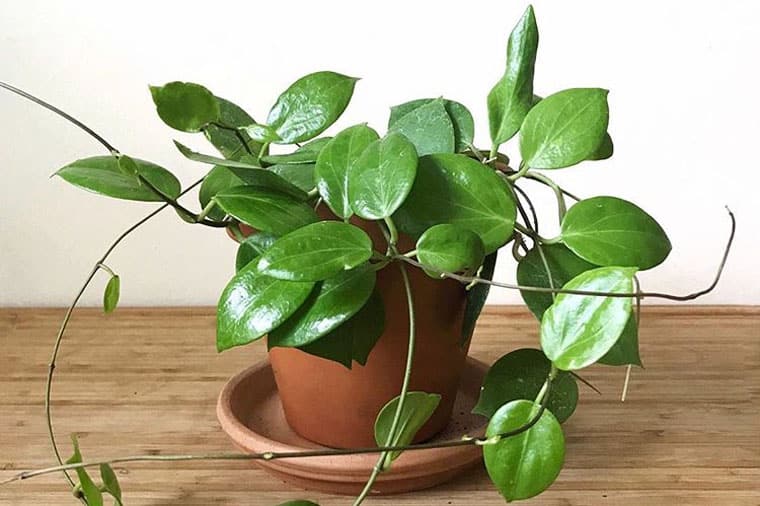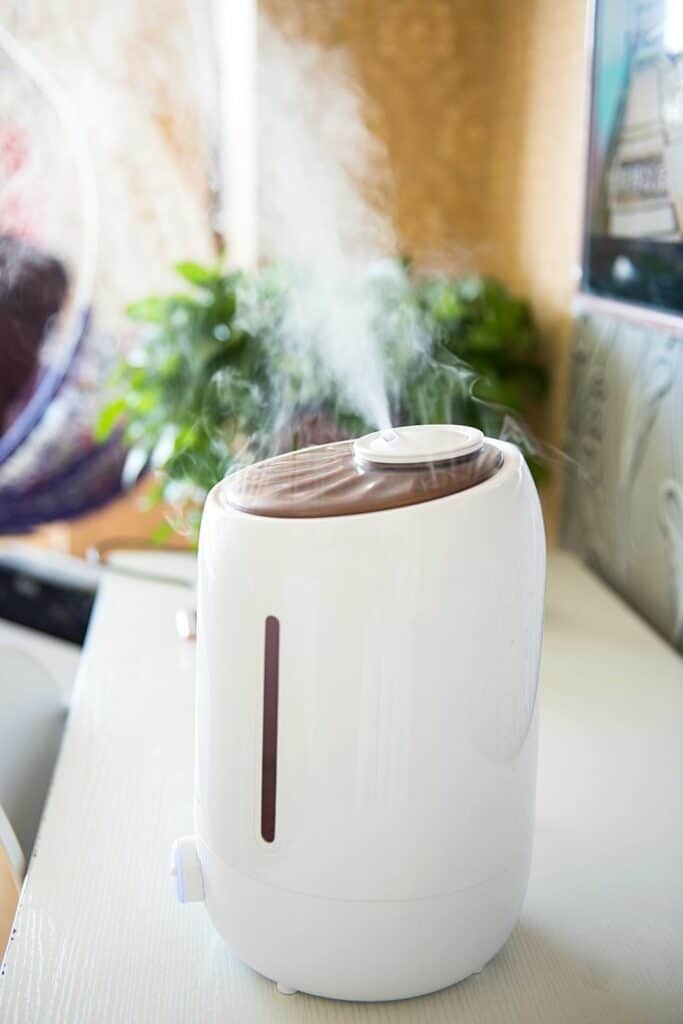Hoya plants, beloved for their waxy leaves and unique star-shaped flowers, are a favorite among indoor gardeners for their resilience and beauty. Originating from Southeast Asia, Australia, and the Pacific Islands, these plants thrive in tropical climates, making them ideal choices for indoor gardening enthusiasts worldwide.
Overview of Hoya Species
Hoya plants belong to the Asclepiadaceae family and encompass over 200 species. Each species varies in leaf shape, growth habit, and flower color, ranging from vibrant pinks to deep reds. Here’s a glimpse into some popular Hoya species:
| Species | Description |
|---|---|
| Hoya Carnosa | Known for its thick, leathery leaves and clusters of pink star-shaped flowers. |
| Hoya Kerrii | Recognized by its heart-shaped leaves, often sold as a symbol of love and friendship. |
| Hoya Pubicalyx | Features elongated leaves with silver speckles and produces dark red to maroon flowers. |
| Hoya Lacunosa | Compact growth with small, fragrant white flowers, ideal for smaller spaces or hanging baskets. |
Unique Characteristics of Hoya Plants
Hoya plants exhibit several distinctive traits that make them stand out in any collection:
- Waxy Leaves: Their thick, glossy leaves help them retain moisture, making them drought-tolerant.
- Longevity: With proper care, Hoyas can live for decades, rewarding growers with abundant blooms.
- Epiphytic Nature: Many species grow on trees in their natural habitat, adapting well to potted environments.

Source Image: thegardenprepper.com
General Care Requirements
To ensure your Hoya plants thrive, understanding their basic care requirements is essential. This includes attention to humidity, light levels, watering, and soil conditions.
Understanding Humidity Needs
Humidity plays a crucial role in the health and growth of Hoya plants, mimicking their native tropical environments.
| Humidity Level | Description |
|---|---|
| High Humidity | Mimics tropical rainforest conditions, ideal for most Hoya species to encourage blooming. |
| Moderate Humidity | Suitable for acclimated plants or those in cooler climates where high humidity may not be natural. |
Importance of Humidity for Hoyas
Maintaining adequate humidity levels is vital for several reasons:
- Flower Production: Higher humidity encourages more frequent and abundant flowering.
- Leaf Health: Prevents leaf yellowing and maintains turgidity, crucial for photosynthesis.
- Overall Growth: Promotes healthy root development and supports overall plant vigor.
Natural Habitat and Climate Conditions
Hoyas originate from regions with consistent warmth and humidity, thriving in dappled sunlight under tree canopies. Understanding their natural habitat helps in replicating ideal growing conditions indoors.

Source Image: houseplantcentral.com
Signs Your Hoya Needs More Humidity
Recognizing when your Hoya plant requires increased humidity is crucial for maintaining its health and promoting growth.
| Signs of Low Humidity | Description |
|---|---|
| Wilted or Drooping Leaves | Indicates insufficient moisture in the air, causing the leaves to lose turgidity and appear limp. |
| Brown Leaf Edges or Tips | Dry air can lead to leaf dehydration, causing browning or crisping along the edges or tips. |
| Reduced Flowering | Hoyas may produce fewer flowers or fail to bloom in low humidity conditions, affecting their vibrancy. |
Ideal Humidity Levels for Hoya Plants
Determining the optimal humidity range ensures your Hoya thrives year-round, mimicking its native environment.
| Hoya Species | Ideal Humidity Range |
|---|---|
| Hoya Carnosa | 60-80% humidity for best flowering results |
| Hoya Kerrii | 50-70% humidity to maintain leaf health |
| Hoya Pubicalyx | 60-80% humidity for vibrant leaf and flower growth |
| Hoya Lacunosa | 50-70% humidity for compact growth and flower production |
Effects of Low Humidity on Hoya Health
Insufficient humidity can adversely affect your Hoya plant in various ways:
- Stunted Growth: Slows down growth rate and overall plant development.
- Leaf Problems: Leads to dry, crispy leaves or leaf drop.
- Flower Drop: Causes buds to drop before blooming, reducing flowering frequency.
Benefits of Maintaining Proper Humidity
Optimal humidity levels provide numerous benefits to Hoya plants:
- Healthy Foliage: Promotes lush, glossy leaves and maintains leaf coloration.
- Enhanced Flowering: Encourages frequent blooming with vibrant, long-lasting flowers.
- Overall Vigor: Supports robust root growth and plant resilience against pests and diseases.

Source Image: cleverbloom.com
Measuring Humidity
Accurately measuring humidity levels is essential for effective Hoya care, ensuring conditions align with their requirements.
Tools for Measuring Indoor Humidity
Several tools are available to monitor humidity levels in your home environment:
| Tool | Description |
|---|---|
| Hygrometer | Digital or analog device that measures relative humidity in the air, essential for precise monitoring. |
| Indoor Weather Station | Offers comprehensive data on humidity, temperature, and atmospheric pressure, aiding in plant care. |
| Smart Hygrometer | Connects to mobile apps for real-time monitoring and alerts, ideal for tech-savvy gardeners. |
Using Hygrometers Effectively
To ensure accurate readings and optimal plant care, follow these tips when using hygrometers:
- Placement: Position near your Hoya plant, avoiding direct contact with sunlight or drafts.
- Calibration: Regularly calibrate analog hygrometers to maintain accuracy.
- Monitoring: Check readings daily to adjust humidity strategies as needed.
Monitoring and Recording Humidity Levels
Maintaining a log of humidity readings helps track trends and adjust care routines for your Hoya plants:
- Recording: Note humidity levels at different times of day and during seasonal changes.
- Patterns: Identify patterns to anticipate when adjustments in humidity management are necessary.

Source Image: plantophiles.com
Hoya Plant Humidity Needs
Creating a Humid Environment
Ensuring your indoor environment meets Hoya plants’ humidity needs involves employing various methods and tools.
Indoor Humidifiers and Their Types
Humidifiers are invaluable for maintaining consistent humidity levels, especially in dry or heated indoor spaces.
| Type of Humidifier | Description |
|---|---|
| Ultrasonic Humidifiers | Uses ultrasonic vibrations to produce a fine mist, effective for increasing humidity quickly. |
| Evaporative Humidifiers | Utilizes a fan to blow air through a wet wick filter, adding moisture to the air in the process. |
| Steam Vaporizers | Boils water to create steam, which is released into the air, suitable for larger areas. |
Choosing the Right Humidifier for Your Space
Consider these factors when selecting a humidifier for your Hoya plants:
- Room Size: Choose a humidifier that matches the square footage of your space for efficient coverage.
- Noise Level: Opt for quieter models, especially if placing the humidifier in living areas or bedrooms.
- Maintenance: Select units with easy-to-clean components to prevent mold or bacteria growth.
Maintenance and Cleaning of Humidifiers
Regular maintenance ensures your humidifier functions effectively and prolongs its lifespan:
- Cleaning Schedule: Clean humidifier components weekly using vinegar or hydrogen peroxide to prevent buildup.
- Water Quality: Use distilled or filtered water to minimize mineral deposits that can affect plant health.
Natural Humidity Boosters
Supplemental methods can enhance humidity without using electric humidifiers:
- Pebble Trays: Place Hoya pots on trays filled with water and pebbles to create a humid microenvironment around the plants.
- Grouping Plants: Cluster Hoya plants together to increase humidity levels through transpiration.
- Utilizing Water Features: Incorporate indoor fountains or small water features to add moisture to the air.

Source Image: www.youtube.com
Humidity Control in Different Seasons
Adapting humidity levels throughout the year ensures optimal conditions for Hoya plants during seasonal changes.
Adjusting Humidity Levels in Winter
Winter’s dry indoor air can be challenging for Hoyas. Strategies to maintain humidity include:
- Humidifier Use: Increase usage of humidifiers to compensate for low indoor humidity levels.
- Misting: Regularly mist Hoya plants to provide immediate moisture to their leaves.
- Avoid Drafts: Protect plants from cold drafts that can exacerbate dry conditions.
Managing High Humidity in Summer
High humidity during summer can lead to issues like fungal growth. Tips to manage humidity include:
- Air Circulation: Use fans to improve air circulation around plants and reduce humidity buildup.
- Reduce Watering: Adjust watering frequency to prevent over-saturation of soil, which can contribute to high humidity.
Seasonal Care Tips for Hoyas
Tailor your care routine based on seasonal changes to ensure year-round health and growth:
- Spring and Summer: Increase fertilization and watering frequency during active growth periods.
- Fall and Winter: Reduce watering and fertilizer application as growth slows down.

Source Image: houseplantcentral.com
DIY Humidity Solutions
Explore homemade methods to boost humidity around your Hoya plants without relying on commercial humidifiers.
Homemade Humidity Devices
Create simple yet effective humidity aids using household items:
| DIY Device | Description |
|---|---|
| Humidity Tray | Fill a shallow tray with water and pebbles, placing your Hoya pot on top to benefit from evaporating moisture. |
| Terrarium | Enclose your Hoya plant in a glass container to create a humid microclimate, ideal for moisture-loving plants. |
Crafting a Humidity Dome
Constructing a humidity dome provides localized moisture for young or sensitive Hoyas:
- Materials: Use clear plastic containers or recycled glass jars to cover individual plants.
- Ventilation: Ensure adequate airflow to prevent condensation buildup and fungal issues.
Using Terrariums for Increased Humidity
Repurpose glass terrariums to create mini ecosystems for Hoyas:
- Setup: Layer soil with activated charcoal for drainage, adding moss for humidity retention.
- Maintenance: Monitor moisture levels and ventilation to prevent mold growth inside the terrarium.

Source Image: www.pinterest.com
Hoya Plant Humidity Needs
Humidity and Light Balance
Understanding the interplay between humidity and light levels is crucial for optimizing Hoya plant health.
Impact of Light on Humidity Needs
Light intensity influences how Hoyas respond to humidity levels:
- High Light: Increases transpiration, requiring higher humidity levels to prevent leaf dehydration.
- Low Light: Reduces moisture loss, allowing for lower humidity requirements compared to brighter conditions.
Positioning Hoyas for Optimal Growth
Place Hoyas strategically to balance light exposure and humidity requirements:
- Indirect Light: Ideal for most Hoya species, providing bright but filtered sunlight to avoid leaf scorching.
- Morning Sun: Eastern exposure offers gentle morning sunlight, beneficial for promoting flowering.
Balancing Light and Humidity
Adjust placement and environmental factors to maintain a harmonious balance:
- Rotate Plants: Regularly rotate Hoyas to ensure even light distribution and prevent uneven growth.
- Monitor Leaves: Check for signs of sunburn or stress, adjusting placement accordingly.
Common Humidity Mistakes
Avoid pitfalls that can negatively impact Hoya plants due to incorrect humidity management.
Over-humidifying and Its Risks
Excessive humidity can lead to issues such as:
- Fungal Diseases: Increased moisture levels create a favorable environment for fungal growth.
- Root Rot: Prolonged exposure to soggy soil due to high humidity can cause root damage and decay.
Avoiding Mold and Mildew
Prevent mold and mildew by:
- Good Air Circulation: Use fans or open windows to improve airflow and reduce stagnant, humid conditions.
- Proper Drainage: Ensure pots have drainage holes and use well-draining soil to prevent waterlogged conditions.
Preventing Root Rot from Excess Humidity
Implement strategies to mitigate root rot risks:
- Moderate Watering: Allow soil to partially dry between waterings to prevent waterlogged conditions.
- Optimal Drainage: Use pots with drainage holes and avoid saucers filled with standing water.

Source Image: www.pinterest.ca
Humidity Needs for Different Hoya Varieties
Different Hoya species may have varying preferences when it comes to humidity levels and care routines.
Comparing Humidity Preferences
Understanding the humidity preferences of popular Hoya varieties helps tailor care strategies:
| Hoya Variety | Humidity Preference |
|---|---|
| Hoya Bella | Prefers moderate to high humidity levels |
| Hoya Linearis | Thrives in drier conditions with occasional misting |
| Hoya Australis | Enjoys high humidity and regular misting |
| Hoya Imperialis | Requires consistent high humidity for optimal growth |
Specific Care Tips for Popular Hoya Types
Each Hoya variety may benefit from specific care approaches to maintain health and encourage flowering:
- Hoya Bella: Provide regular misting and maintain humidity above 60% for prolific flowering.
- Hoya Linearis: Allow the soil to dry slightly between waterings and provide occasional misting in dry environments.
- Hoya Australis: Keep humidity levels high, especially during active growth periods, to support lush foliage and frequent blooming.
- Hoya Imperialis: Ensure humidity remains consistently high, ideally between 70-80%, to promote large, showy flowers.
Adapting Care for Unique Varieties
For less common or unique Hoya varieties, research specific care requirements to ensure optimal growth and longevity:
- Rare Varieties: Consult botanical resources or specialty nurseries for tailored care advice.
- Hybrid Varieties: Consider parent species’ preferences when determining humidity and care routines.
Signs of Humidity Stress
Identifying signs of humidity-related stress helps prevent potential issues and adjust care promptly.
| Symptoms of Humidity Stress | Description |
|---|---|
| Leaf Curling or Wrinkling | Indicates dehydration due to low humidity or excessive transpiration under high light conditions. |
| Yellowing Leaves | Can signify root stress or nutrient deficiencies exacerbated by improper humidity levels. |
| Stunted Growth | Slow growth rate despite adequate light and nutrition, often due to suboptimal humidity conditions. |
Treating and Preventing Stress Symptoms
Address humidity stress promptly with targeted interventions:
- Misting: Increase humidity around affected plants with regular misting sessions.
- Humidity Adjustment: Adjust room humidity using humidifiers or natural methods to stabilize conditions.
- Hydration Check: Ensure consistent watering practices to supplement humidity management efforts.
Long-term Solutions for Healthy Hoyas
Establish sustainable practices to maintain optimal humidity levels year-round:
- Seasonal Adjustments: Modify care routines based on seasonal changes in indoor humidity levels.
- Humidity Monitoring: Use hygrometers to track and adjust humidity settings as needed.
- Consistent Care: Maintain regular grooming, pruning, and pest management to support overall plant health.
Integrating Technology in Hoya Care
Explore technological advancements that streamline humidity control and enhance plant care precision.
Smart Humidity Controllers
Invest in smart devices that automate humidity adjustments based on real-time data:
- Wi-Fi Enabled Controllers: Connects to mobile apps for remote monitoring and control, ideal for frequent travelers.
- Sensor Accuracy: Ensures precise humidity readings and automated adjustments for optimal plant health.
Using Apps for Monitoring Plant Health
Utilize mobile apps designed for plant care to track humidity levels and receive personalized recommendations:
- Data Logging: Records humidity trends over time, aiding in long-term care planning.
- Notifications: Alerts users to humidity fluctuations or maintenance reminders for consistent plant care.
Automated Systems for Consistent Humidity
Consider integrated systems that regulate humidity alongside other environmental factors:
- Climate Control Units: Combines humidity management with temperature and light control for comprehensive plant care.
- Efficiency: Reduces manual intervention while ensuring stable growing conditions for Hoyas.

